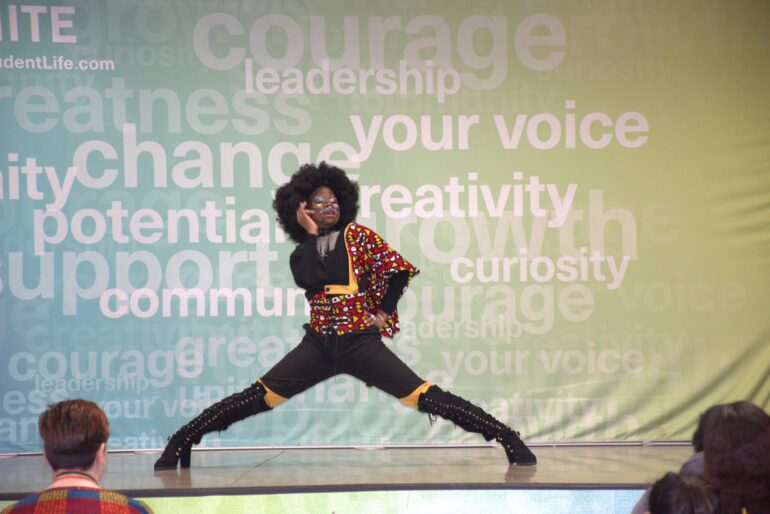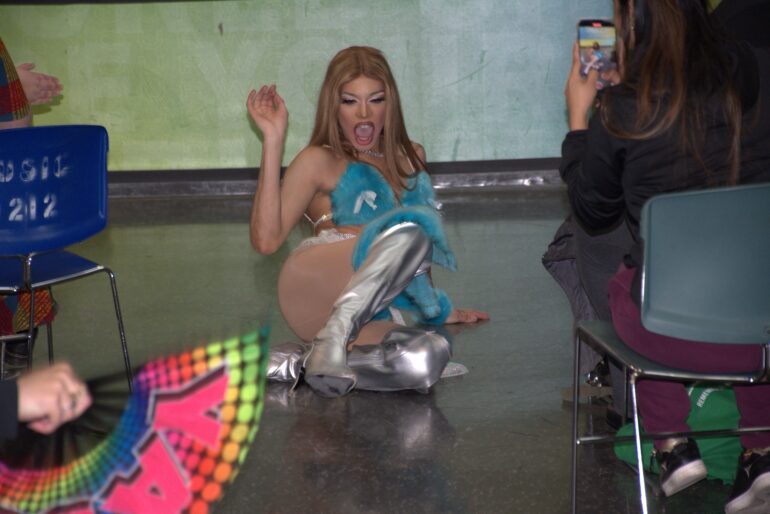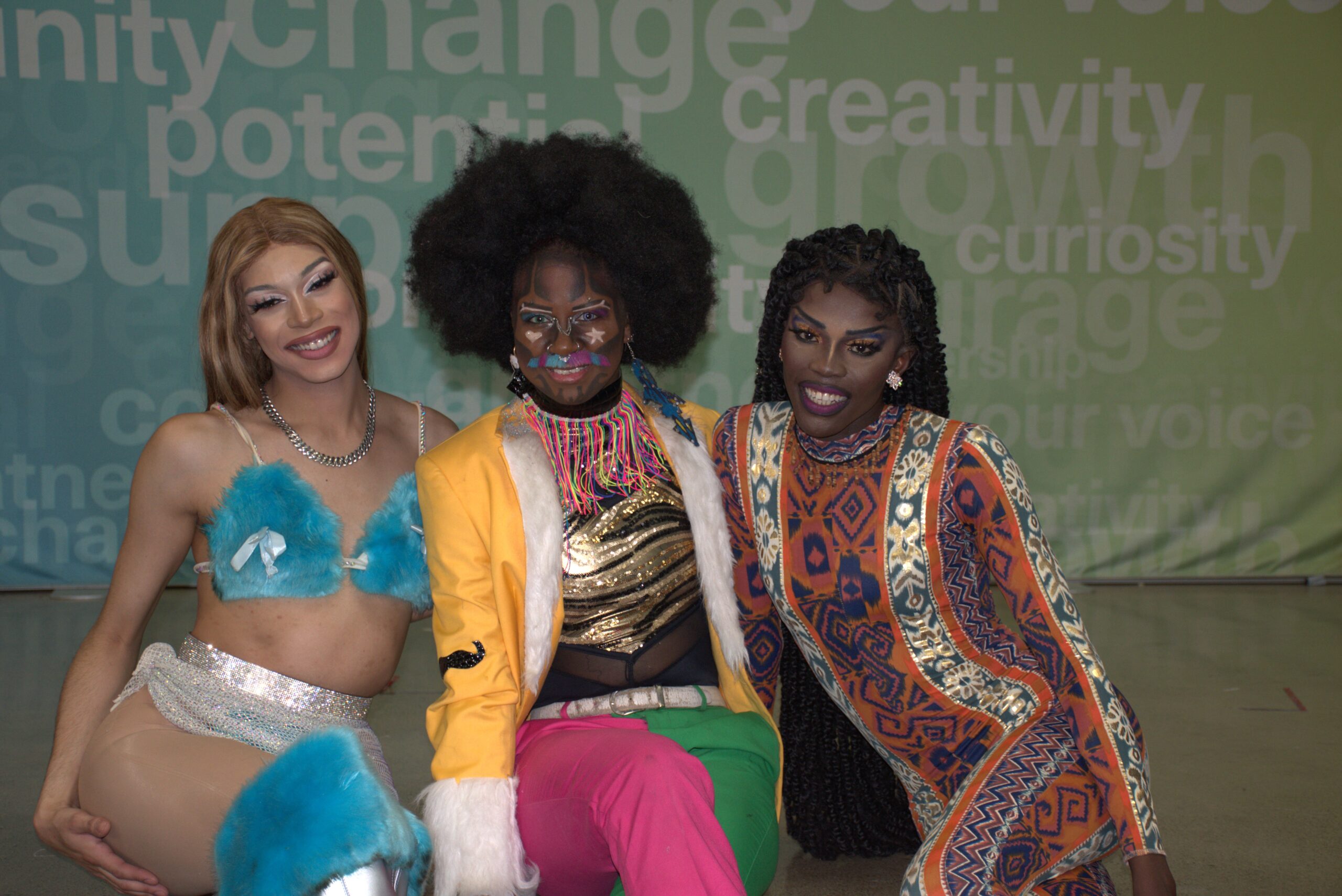Students watched in awe as drag performers The Virgo Queen, Manny Dingo and Naomi Leone, all Humber College alumni, gave them an unforgettable show.
“I love what I do,” drag king Manny Dingo said. “It makes me happy and proud of who I am.”
For many in the LGBTQ+ community, drag is not only a showcase of their talent but a method of self-expression.
Humber College North held its second annual drag show to close out Black History Month on Feb. 23, 2024, in the Student Centre.
LGBTQ+ Resource Centre, IGNITE, and Black Student Support and Engagement put on the BLAQ Collective Drag Show, highlighting black, queer talent.

Manny Dingo shows the audience their flexibility in a jaw-dropping centre split. Photo credit: Ciara Lalor-Lindo
While the art of drag is ever prominent in society now, this has not always been the case.
The art of drag performance has been around since ancient Greece but gained prominence in black, queer spaces in the 20th Century.
Unfortunately, with that prominence came prejudice.
Outside of the LGBTQ+ community, Drag and ballroom culture was often disapproved of and seen as immoral by those with traditional heteronormative views.
Thaddeus Morgan explained how ballroom drag shows gained popularity in the 1800s in their article entitled How 19th-Century Drag Balls Evolved into House Balls, Birthplace of Vogueing.
As drag balls grew in popularity in the early 20th century, the shows were deemed illegal and quickly pushed underground, they wrote.
As the shows were pushed into hiding, Black culture was on the rise, allowing for Black creatives to explore gender, sex, and sexuality, stated Morgan.
These underground spaces offered a safe space to the Black and Latinx queer community, allowing for gender expression instead of ridicule.
Drag performers continued to fight for their rights even as RuPaul’s Drag Race and its several spinoffs rose in popularity in recent years.
The debate surrounding whether or not drag performers should be allowed to read to children has caused an uproar, placing the safety of the performers at risk.
American states Texas, Montana, and Tennessee have all passed laws that made it illegal for drag artists to perform in certain public spaces.
“I know the last few months have been hard for a lot of drag performers and queer, trans people,” Dingo said. “But we are here because we want people to know that this is important to us.”
While the drag community has continued to be criminalized, that did not stop their need to show why drag matters.

The Virgo Queen wows the crowd after jumping off the stage mid-performance. Photo credit: Ciara Lalor-Lindo
“Remember to always choose love and be kind to one another,” Leone told the audience. “It’s the love that you guys give me that allows me to do what I love.”
The performers’ love for their craft was palpable and exposed drag to many students for the first time.
International student Shivani Patel said the show was a new experience for her.
“I’m from Kenya and in Kenya I wouldn’t see all of this,” Patel said. “Seeing my own people supporting one another makes me want to go to another show.
“I’m happy to see people comfortable in their bodies who can motivate other people to be themselves,” Patel said.
As three performers made their final bows, Leone left the audience emphasizing her message of being kind to one another.

